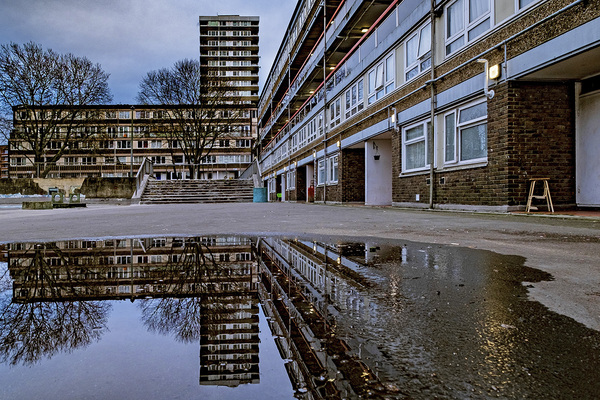You are viewing 1 of your 1 free articles

Joanna Bouloux, Donna McCarthy and Hetal Ruparelia are partners at Devonshires
Tech sensors are a powerful tool in combatting damp and mould
Technological tools have huge potential in the fight against damp and mould, but providers need to fully think through what they hope to achieve, write Joanna Bouloux, Donna McCarthy and Hetal Ruparelia
With damp and mould high on social landlords’ agendas, we are seeing a drive across the sector to consider new ways to assist in providing healthy homes. As a result of technological advancements, sensors have emerged as a powerful tool in the battle against damp and mould, offering a proactive and data-driven approach.
In February, the Housing Ombudsman, in its one-year follow-up to its damp and mould report, gave examples of good practice, including modelling the potential for mould growth by using humidity and temperature sensor data.
A report issued by the Regulator of Social Housing in June, noted that landlords cannot afford to be complacent. Damp and mould remain a perennial problem that needs to be addressed.
As part of the solution, we are seeing a number of clients turn to technology to inform both their understanding and strategy in the fight against damp and mould.
Sensors for properties have been around for some time and have been used for things like monitoring if somebody had a fall. More recently, registered providers (RPs) have been looking to utilise them for monitoring conditions that could lead to damp and mould.
Sensors can be installed to collect data on a number of factors that could lead to damp and mould, such as temperature, humidity, ventilation and how much the temperature rises in a property when the heating is turned on.
This data is clearly crucial for a landlord to understand the issues within a property. If a house is impossible to keep warm and has no ventilation, then damp and mould can thrive.
“A report issued by the Regulator of Social Housing in June noted that landlords cannot afford to be complacent. Damp and mould remain a perennial problem that needs to be addressed”
There are, of course, legal issues that need to be considered with the collection of personal data. Pursuant to data protection legislation, and the UK General Data Protection Regulation (UK GDPR) in particular, residents have a statutory right for their personal data to be processed lawfully, fairly and transparently and for a limited purpose. These principles lie at the heart of data-protection legislation.
RPs can satisfy the above principles and collect personal data relating to environmental conditions by relying on legitimate interest as the lawful basis to assist them in ensuring they are providing a healthy place to live. RPs should ensure their privacy notice outlines their reliance on legitimate interests for this purpose.
On the other hand, to collect energy-consumption data, RPs must obtain resident consent.
Data from one home is not particularly informative, but if collected across a landlord’s housing stock, it provides a picture of the risk across properties and highlights which homes are most likely to encounter damp and mould. It is also useful for identifying if measures taken, such as installing a new heating system, have an impact.
“If a house is impossible to keep warm and has no ventilation, then damp and mould can thrive”
Before embarking on installing sensors, it is important for an RP to understand what it is seeking to achieve. Be clear about what you are going to do with the data. It is essential to have a plan for how the data collected will be used. If you identify a problem, such as condensation, you also need to have a plan for how to deal with it.
It is vital that all landlords consider the steps they are taking in respect of damp and mould, which may include installing sensors to gather data to enable them to take preventative action to tackle damp and mould now.
Joanna Bouloux, Donna McCarthy and Hetal Ruparelia, partners at Devonshires
Sign up for our asset management newsletter
Already have an account? Click here to manage your newsletters










